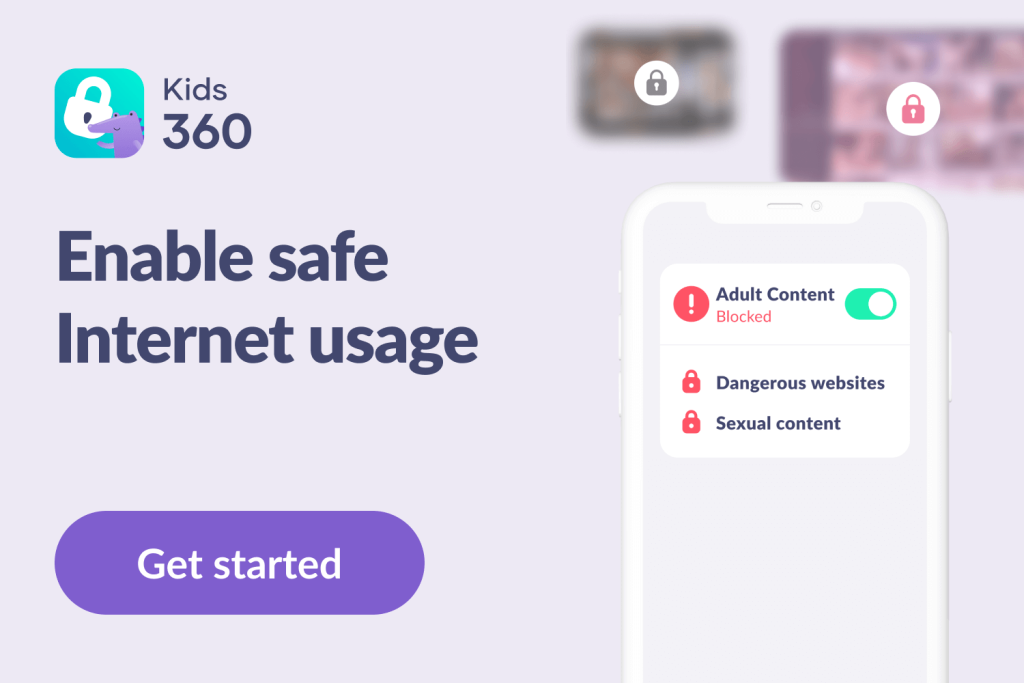What is Sexting and Is It Common Among Teens?

There’s no doubt about it: parenting a teen is hard work. As well as the raging hormones, desire for greater freedom and independence and need to cope with their changing bodies, teens have to navigate an often hazardous online world. For parents, the best way to protect their kids from digital risks, such as sexting, is to be aware of them so that they can take the actions needed to keep them safe.
If you’ve heard the term but are wondering what is sexting, we’ve got the answers you need below, as well as ways to keep your kid safe.
Contents:
- What is Sexting?
- How Do You Know if Your Teen is Sexting?
- How to React to Sexting as a Parent
- How to Keep Your Child Safe Online
- Keeping Your Teen Safe from Sexting
- FAQs
What is Sexting?

antoniodiaz/Shutterstock.com
The term sexting refers to the act of sending sexual text messages, images, or videos, which are also known as sexts. The phrase first emerged in the early 2000s, reflecting the growing availability and accessibility of digital devices. Examples of sexting include making sexual comments or suggesting a sexual activity, sending nude or semi-nude photos, or making other types of sexually explicit comments or suggestions. Is sexting normal? Between consenting adults, yes. Between minors, or an adult and a minor, no.
What’s the difference between sexting and cybersex? Cybersex is any type of sexual activity that uses the internet; therefore, sexting is a form of cybersex. Sexting is legal in the US for consenting adults but is illegal when a minor is involved, with some states having specific laws relating to this.
For consenting adults, sexting can be a way to build intimacy, flirt, signal trust and affection, have fun, experiment sexually, or retain a feeling of intimacy in a long-term relationship.
How Do You Know if Your Teen is Sexting?

Prostock-studio/Shutterstock.com
Determining whether your teen is sexting can be challenging, but there are certain signs and behaviors to watch for. Here’s how you might know if your teen is involved in sexting:
- Increased secrecy with their phone or other devices—If your teen becomes more secretive about their phone, frequently changing passwords or hiding their screen when you’re around, it could be a sign of sexting.
- Sudden spike in messaging activity—Noticeable spikes in messaging activity, especially late at night, might indicate that your teen is engaging in conversations that they want to keep private.
- Becoming more anxious, withdrawn, or defensive—Teens involved in sexting may experience anxiety, guilt, or stress, leading to mood swings.
- Avoiding discussions about online safety—If your teen avoids conversations about online safety, relationships, or sex, it might indicate discomfort due to their own actions.
- Unexplained purchases, such as prepaid phones—Some teens may use prepaid phones to sext without their parents’ knowledge. If you notice unexplained purchases, it could be a red flag.
- Discovering explicit content on their device.
- Hearing concerns from peers or friends.
How Common is Teen Sexting?

Ground Picture/Shutterstock.com
If your teenage child uses a phone or other digital device, it’s important to consider the possibility that they’re sexting. How common is sexting among teens? A 2021 study published in JAMA Pediatrics demonstrated that sexting is becoming increasingly common among adolescents, with at least one in four teens receiving sexually explicit emails or texts, and at least one in seven teens sending sexts. The study also revealed that more than one in ten teens had forwarded sexts without consent.
Why Do They Sext?
It’s important to think about why teens engage in sexting. One of the key reasons for teen sexting is peer pressure. Teenagers can often feel intense pressure in this regard, and the fear of becoming an outsider within their social group, which encourages them to do things without considering the consequences, however inappropriate. Other reasons teens sexting occurs include obliviousness to the consequences and a perception that such behavior is considered “normal.” Plus, of course, when young people are in the throes of first love, infatuation can easily get the better of logic, leading to teens sharing sexual messages or photos.
On top of this, teens may use sexting to gain attention from their peers—as well as the fact that their still-developing brains mean that they’re naturally subject to impulsivity. Many teens also have a false sense of confidence regarding some messaging apps, which claim to delete messages once they’ve been read by the recipient.
What Apps are Used to Sext?

pikselstock/Shutterstock.com
While there are some apps dedicated to sending sexts, the vast majority of teens (and adults) sexting use a standard messaging or social media platform or site such as WhatsApp, Facebook Messenger, or an email app to send or share messages, pictures, and videos.
Emojis as Sexts
Emojis can be used as part of sexting, too, with some of the common chat symbols used, often in terms of their placement in the chat, to suggest a sexual message. Such emojis include the hotdog, eggplant, tulip, honeypot, peach, fireworks, and water droplets.
It’s important for parents to be aware of these types of emojis, and their potential combinations if they’re concerned that their teenager is sexting.
Read more: A Guide to Understanding Emoji Slang (For Confused Parents!).
How is Sexting Affecting Teens?

Sylvie Bouchard/Shuttertock
Sexting can have a huge impact on teens, potentially negatively affecting their mental health, creating confusion about what constitutes a healthy relationship, and even landing them in hot water in terms of their school or the law.
a study carried out in 2018 and featured in Pediatrics drew attention to the potentially devastating results of phone sexting. With twenty-three states in the US regarding sexting among teenagers as falling under the crime of possessing child pornography, a conviction can result in jail time and an entry on the relevant sex offenders register.
The Emotional Fallout of Sexting
Sexting can take a huge toll on a teen, especially if the sext gets into the wrong hands, is shared, or is used as an act of revenge in the wake of a break-up for example. It can lead to bullying, and isolation, causing the affected teen to feel extremely anxious, and even depressed. They may feel too embarrassed or ashamed to reach out for help. Feeling as if there is no way out is common in cases where sexting has gone “wrong.”
Things that are posted online have a tendency to hang around, meaning a sexual image that’s been shared could crop up and compromise an individual’s reputation in years to come. After all, even if it’s been deleted from the original platform on which it was shared, there is no way to know how many times it was viewed, shared, or reposted. Knowing this causes teens even greater stress, adding to the sense that there’s no way to remedy what has happened.
Related: Online Counseling for Teens: Free and Accessible Resources.
How to React to Sexting as a Parent

BearFotos/Shutterstock.com
Now we’ve had a look at the definition of sexting and how it can affect your teen, it’s time to turn our attention to how to address and respond to it as a parent.
Speaking openly about sexting is key, however cringey this may feel. The last thing you want is for your kid to learn about sexting from someone else. It can be tempting to assume that sexting—and its possible consequences—is something that could never happen to your teen. Remember, though, that it’s in a kid’s nature to experiment, and warning them about its dangers is one of the best ways to keep them safe.
When talking to your teen about sexting, it’s important to discuss the potential emotional and legal consequences of this activity. Encourage your child to consider how they would feel if a sexually explicit photo of themselves was shared, and think about the hurt and embarrassment this could cause. Be sure to tell them, too, that even if they’re in a romantic relationship and engage in sexting with their girl or boyfriend, it’s often illegal for a minor to possess explicit images—even of partners.
This is a good opportunity to talk to your teen about the importance of knowing who we are sharing information with online. Even forwarding or sharing what may seem like a harmless joke could have serious consequences and cause hurt and embarrassment to the person involved.
If you discover that your child has been using their social media account or messaging service to send sexts, knowing what to do can be really difficult. It’s vital to avoid shaming kids—no doubt they already feel mortified. Here are some of the steps to take:
- Talk about what’s happened immediately.
- Outline the possible consequences; you may wish to consider taking away their phone or monitoring their communications for a set period.
- Discuss the potential implications of sending a sext, such as blackmail, coercion, legal ramifications, stalking, and cyberbullying.
- Regardless of whether your teen was the one to initiate the sexting, suggest they ask the recipient to delete the images or messages in question.
- If an image of your teen has been posted without their consent, contact the relevant website’s administrator and request it be removed.
- Depending on the nature of the sexting, it may need to be reported to the authorities. This is always the case where it involves an adult and a minor.
- Take the opportunity to set (or reinforce existing) rules around the use of phones and other devices, dating, and what is generally acceptable when it comes to devices and relationships.
- Create a home environment in which sexting is a subject that can naturally come up and be discussed—it’s important to keep the conversation going.
Read also: Parenting the Teen Years: Strategies for Effective Discipline and Connection.
How to Keep Your Child Safe Online

Motortion Films/Shutterstock.com
Create an Atmosphere of Open Dialogue
Try to create an atmosphere in your home in which your teen feels able to talk to you about any question they have or issue they’re experiencing. Ensure they understand that you love them unconditionally, and will support them no matter what. Aim to have open, honest dialogue, even about difficult subjects such as sexting, so that nothing is viewed as a no-go topic for conversation.
It’s a good idea to introduce the subject of sexting, and staying safe regarding this, in time—don’t wait for an incident to potentially happen before talking about what sexting is and its dangers.
Establish Phone Ground Rules
If your child has access to a phone or device that connects to the internet, it’s important to set (and stick to) ground rules regarding usage from the start. Many parents allow their kids to use a phone on the condition that they can periodically check their child’s messages and general use. Where children have been found to violate the rules in place, phone privileges are suspended.
Make the Most of a Child Safety App
an app such as Kids360 is a great tool for helping to keep kids safe online. As well as allowing parents to monitor their child’s screen time it also offers location tracking and the ability to block certain internet sites, or even access to the internet altogether. This makes it a powerful means of protecting teens from the dangers of the online world, including sexting, and gives parents that all-important peace of mind.
This particular app is intuitive and extremely easy to use (it can be connected to your child’s device in just five minutes) and comes with a range of features designed to support kids’ development as well as keep them safe.
Kids360 is available on platforms including the Google Store and Apple Play—why not download it today and try it for free?
Dealing with Unwanted Sexting
As well as talking to kids about the dangers and potential consequences of sexting, it’s crucial to let them know exactly what to do should they send or receive a sext. Teach your teen to immediately delete any nude (or semi-nude) image they receive and report what’s happened to a parent. If they have, themselves, sent a sext, they should also immediately inform a parent so the appropriate steps can be taken.
Your teen may be sent someone else’s sext. If this happens, let them know what they should do. The first thing is to tell their friend that their action is unkind and inappropriate and to not do it again. They should talk to a parent or a trusted adult if they think that the subject of the sext is being harassed or bullied, and not show the sext to anyone else. They should delete the sext.
Coping with Pressure from Peers

Monkey Business Images/Shutterstock.com
Teens can have a really tough time when it comes to peer pressure—and the desire to fit in at this age can be all-consuming. Give your teen the tools they need to help resist pressure from their friends to do something they don’t want to or shouldn’t do. Remind them that a good friend would never ask or encourage them to do something that makes them feel uncomfortable or that they know to be wrong. It’s also helpful to remind your teen that, while their peers may have told them they’re engaging in sexting, this may not, in reality, be the case.
Some parents find it helpful to teach their kids the “WWGT” rule—it stands for “What would Grandma think”? The idea is, that if it’s a message or a photo that they wouldn’t want Grandma to see, they shouldn’t send it.
Boost Your Kid’s Self-Esteem
The willingness to sext may stem from low self-esteem, which can also make teens much more likely to succumb to peer pressure. To this end, take steps to develop your child’s self-esteem and confidence, so they’re better able to make healthy decisions and set good boundaries. Encourage your teen to try a new activity, tell her regularly how proud you are of her (and why), and spend regular quality time together as a family.
Model Healthy Online Habits
Kids often model their behavior on that of their parents. Because of this, modeling healthy, respectful online habits is one of the best things you can do to help keep your child safe in the online world. This means setting (and sticking to) screen time limits yourself, putting phones and devices down to properly enjoy time with friends and loved ones, and teaching kids how to behave responsibly online.
Keeping Your Teen Safe from Sexting

Drazen Zigic/Shutterstock.com
For teens, sexting may seem a “normal” part of online interactions, but it’s vital to teach them the impact and consequences of sending or receiving sexual messages, images, or videos. It’s also important, as parents, to be aware that our kids may well be subject to immense peer pressure in this regard, or keen to experiment with and express their feelings to a boy or girlfriend.
Why not share this article with friends who have teenage kids, to help them figure out how to navigate the issue of sexting and take preemptive action to keep their teens safe? If you have any other tips we’d love to hear them—please drop us a line in the comments box below.
FAQs
How illegal is sexting?
In general sexting is illegal whenever it involves a minor. In many states in the US, it can even result in a criminal record and an individual having their details entered onto the sex offenders register.
What is considered a sext?
A sext is an online message, image, or video sent via a phone or other device. Sexting is considered a form of cybersex. Examples of sexts include sexually suggestive messages, nude or semi-nude photos, or suggesting a sexual activity.
What age does sexting start?
Sexting can technically occur at any age if a child has access to a device that’s connected to the internet and is able to receive some form of message. Sexting is increasingly becoming an issue among young people, with studies suggesting that at least one-quarter of teens have sent or received a sext.
Why do people do sexting?
There are many reasons that people engage in sexting. Between consenting adults, it can be part of a healthy relationship, but when it comes to teens it’s often the result of peer pressure, or not fully understanding the potential consequences and impact of such an action.
Is sexting good or bad?
While sexting may be considered a “normal” activity for consenting adults to engage in, it is always “bad”—and usually illegal—when it comes to minors. Sexting can have a serious impact, both regarding kids’ mental health and also in terms of illegality.
The picture on the front page: Diego Zarulli/Shutterstock.com
Проверьте электронный ящик




















